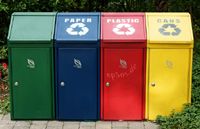3 Simple Ways to Recycle Leads Using Salesforce
 Lead generation is a costly process, typically the largest expense for marketing departments (if you don’t consider the headcount). Companies can spends hundreds of dollars per lead but very few organizations yield maximum value from their lead generation efforts. Common reasons are lead disqualification based on readiness to buy, lack of follow-up and leads becoming stale (too old or too cold).
Lead generation is a costly process, typically the largest expense for marketing departments (if you don’t consider the headcount). Companies can spends hundreds of dollars per lead but very few organizations yield maximum value from their lead generation efforts. Common reasons are lead disqualification based on readiness to buy, lack of follow-up and leads becoming stale (too old or too cold).
Recycling your leads helps get more out of your existing leads and can reduce your dependency on net new leads, dramatically reducing your lead generation costs. Not to be mistaken for lead nurturing, lead recycling is the process of bringing your dead and cold leads back into the sales and marketing pipeline so they can be re-engaged.
Here are 3 simple ways to automate lead recycling using Salesforce.com:
1. Use Lead Queues
Lead queues can help you manage the distribution of your leads. Once a queue owns a lead you could manually, or using assignment rules automatically route leads to your sales reps based on lead activity.
For example, if you have a list of recent tradeshow attendees, you could choose to assign these cold leads to a queue instead of your sales reps since they are not sales ready. Using workflow rules at a later date you can automatically assign warmed up leads that responded to an email campaign to your reps and keep the rest in the queue till the next campaign.
Lead queues also make great owners for low quality leads or disqualified leads which can be brought back into the sales process at a later time.
2. Use Formulas
Formulas are a very powerful feature in salesforce.com and can be used to create a lead score or lead grade based on demographic information, recent lead activity and sales rep feedback. Activity such as campaign responses and website visits can be used to increment the leads score and you can manage lead ownership rules based on the score threshold. For example if you created a formula to score your leads on a scale of 1 to 10, you could choose to send only leads with a score of 6 or higher to your sales team, while the rest remain in a queue till their activity moves them over the score of 5.
3. Use Date Stamps
Date stamps are a great way to monitor the age of a lead. All leads in salesforce get stamped with a created date, but you could also track specific stages of a leads lifecycle using date stamps such as the time it was first opened, or the last time it was modified. Based on your sales goals and processes you could use workflow rules to automatically remove old leads from the sales process, or assign untouched leads to another sales rep or queue till they are woken up by a campaign or activity.
There are a lot more ways you can manage the flow or your leads in salesforce.com or your marketing automation system. What are some techniques you are employing to recycle your leads? Please share your thoughts in the comments.
Photo credit: Epsos.de
